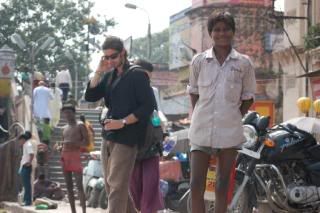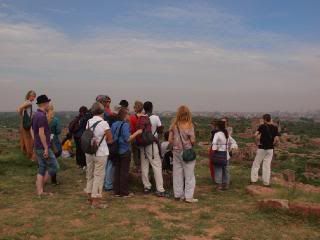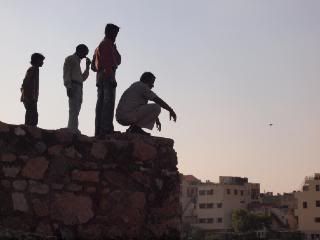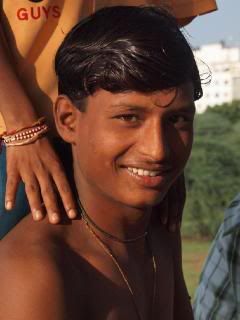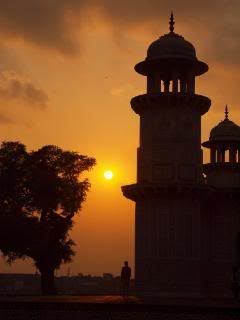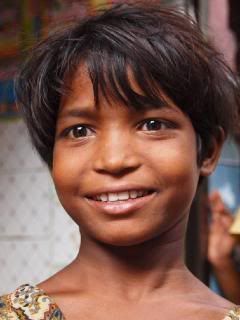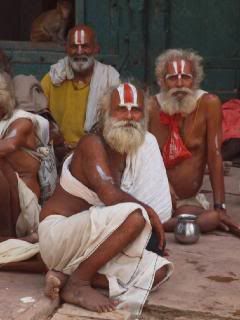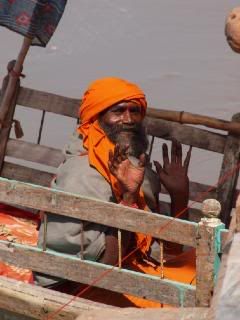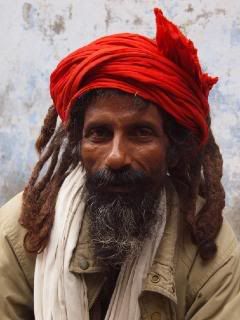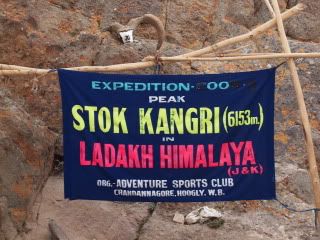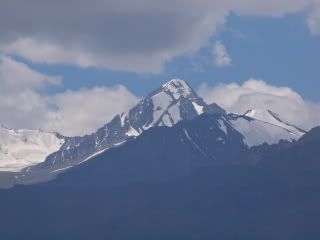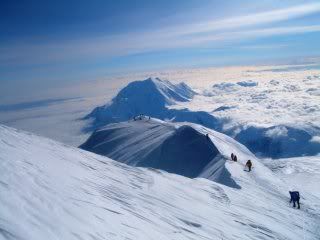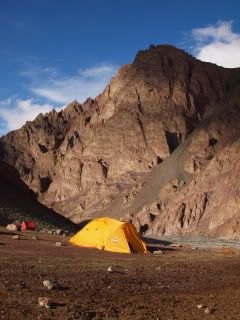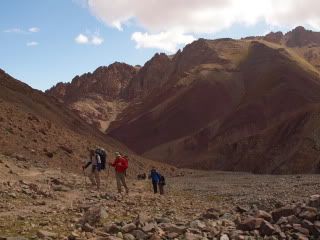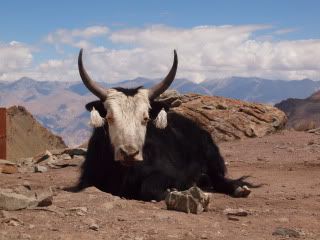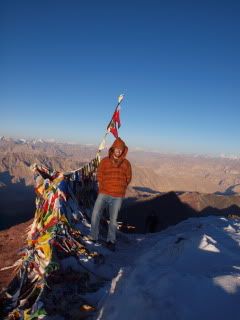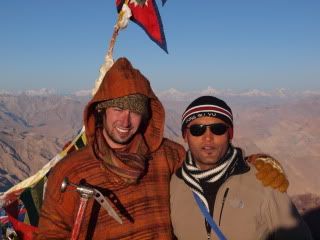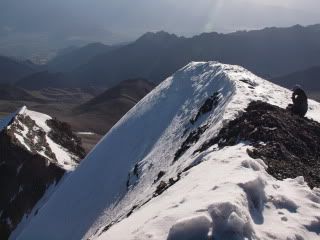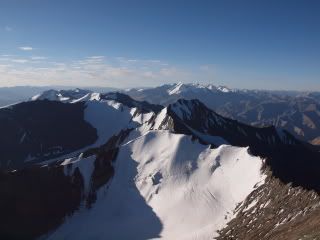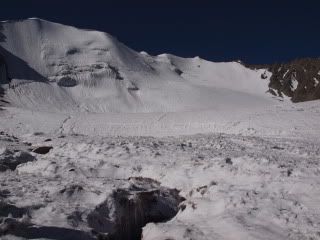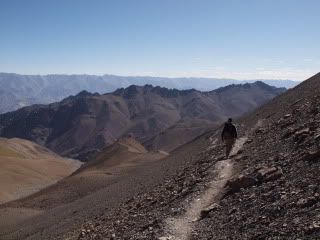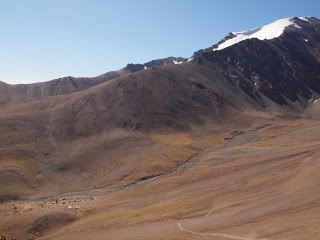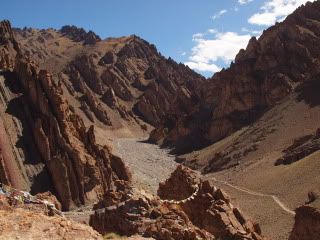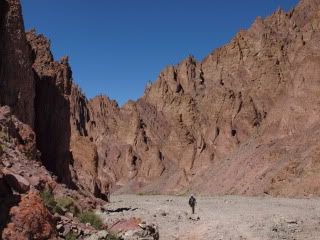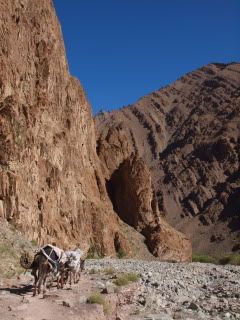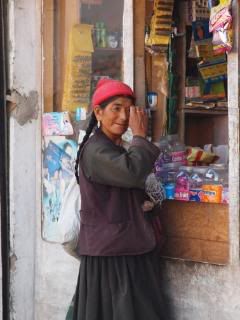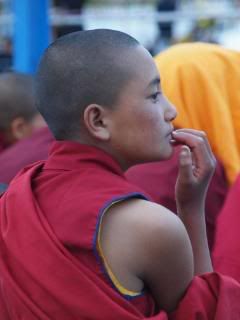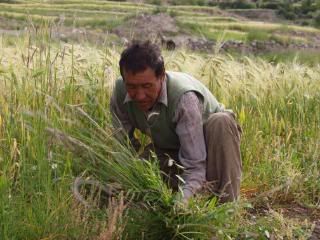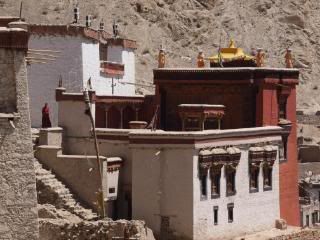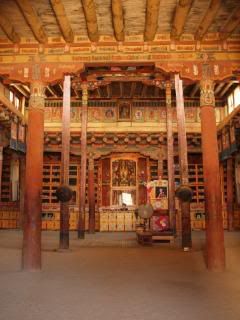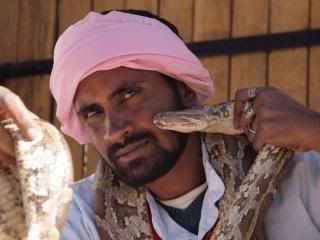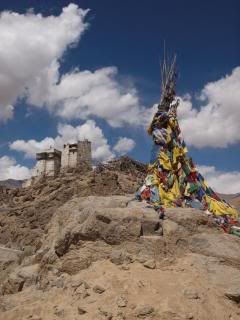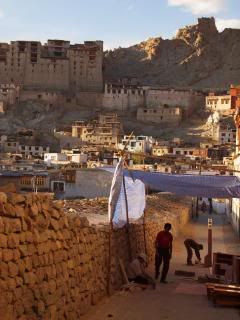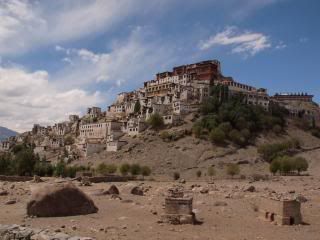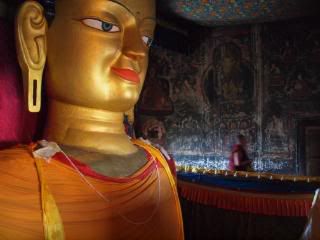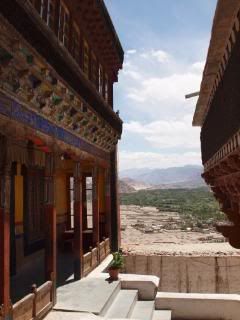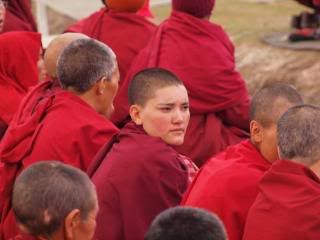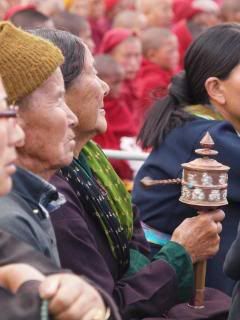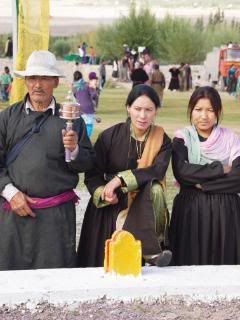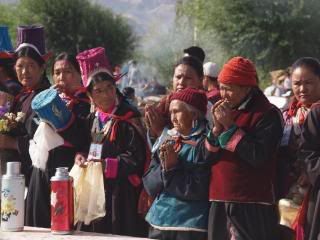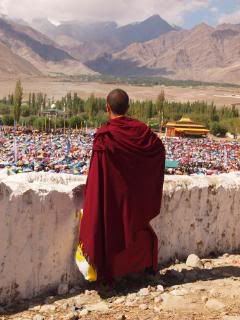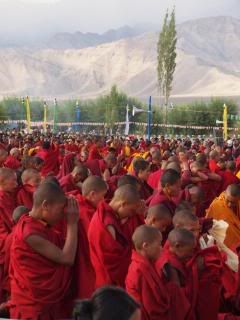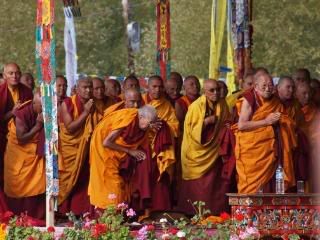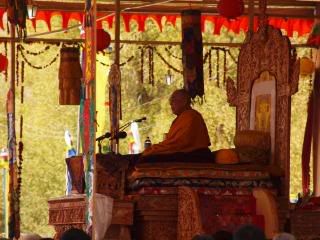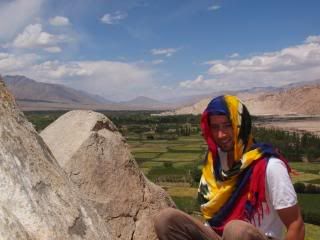====================
Our rented scooter’s headlight died with the engine as Thomas and I looked at each other skeptically. The gate to the yard of Shyam Lal’s hut has collapsed since the last time I had seen it and was laying on its side as a barrier to the front steps. “Shyam-baba,” I called out sheepishly, not wanting to disturb the sleepy cluster of neighboring huts. Nothing moved.
“Shyam-ji,” I yelled a bit louder. I was about to call out again when a woman suddenly appeared from the other side of a low cinderblock wall. “App kaha se hai? (Where are you from?” she asked accusingly. Thomas looked at me with the “I hate you, man,” glare that only a good friend can effectively pull off.
“Ham Ahmerika hai (We’re Americans),” I said quietly, trying to whisper but still be heard.
“Ahhh,” the woman sighed approvingly, flashing a toothy white smile across the dark entryway as she walked around the wall and removed the broken gate. We followed her across the tiny yard and up to the entrance. “Shyam Lal!” she shrieked louder than was necessary and simultaneously banged on the thick, wood door.
--------------------------------------
I had phoned Shyam a week before to let him know that I would be in Pushkar. I assumed that he had understood but, in hindsight, he probably hadn’t. My first day in Delhi with no class was to be on Sunday so Thomas and I, seeing that we had only a two hour Hindi class on Saturday, decided to take both days off for our quick excursion to Pushkar. The two of us shot out of et at 6:00 am on Saturday, confident that we could still make our 6:05 am train to Ajmer. With a little sprinting and a lot of yelling at half-asleep rickshaw drivers we were standing, disappointed, on the empty rail platform at 6:14 am. Overhead on the loudspeaker a shrill woman listed all of the delayed departures. “Jaisalmer Express is five hours late, we are very sorry for the inconvenience. Ahmedabad Mail is seven hours late, we sincerely regret any inconvenience caused.” Apparently ours was the only on-time train in all of India that morning.
We found a booking agent and bought two tickets to Pushkar via what was enthusiastically described to us as a “deluxe AC coach.” We found our bus after a rickshaw ride from the New Delhi station to the Old Delhi station… neither deluxe nor AC equipped.
Touché, greasy travel agent man…
We perked up though as two very cute but similarly put-off French backpackers took their seats in front of us. An irate rickshaw wallah boarded next and began to pester the women from the aisle. Apparently, they had paid him the price that had been agreed upon but he was demanding more. The wallah began to get pushy and hovered over, trying to intimidate them. I got up from my seat to intervene
“Price malum hai…Yeh teek nahee hai,” I told him, finishing with “mahdachud” for good measure. He kind of blinked at me then turned back to the women, grabbed one of their legs, and began to yell again. With one hand on his shoulder and another on his slime covered chest I wrestled him to the front of the bus and pushed him out onto the street. I passed the appreciative women and turned to Thomas in desperate need of hand sanitizer.
We arrived in Jaipur at 3:00 where, unfortunately, the bus driver decided to terminate the half-completed journey. There was a lot of confusion and a packed tempo ride across town but we eventually found a bus that would take us from Jaipur to Ajmer. Our new bus was even less deluxe than the first and Tom and I found ourselves sharing a tiny, mysteriously stained sleeper compartment. This bus driver decided to end his shift at a dhaba fifteen kilometers outside of Ajmer so we hired a rickshaw to take us to our next bus. The final bus was the least deluxe of all with thirty seats for around fifty occupants but there was a chai-wallah selling one-rupee cups up and down the aisle.
Had Tom and I woken up just ten minutes earlier we wound have been in Pushkar by two in the afternoon. But we hadn’t, and at 10:00pm - sixteen hours, four rickshaws, three busses, and zero trains later – we finally arrived in Pushkar.
--------------------------------------
The iron-studded wood door creaked open and the shrill pro-American woman stopped her screaming. A sleepy, confused Shyam Lal stared at me for a second and when he realized who I was drew me into his hut for about the biggest bear hug he could muster. I apologized repeatedly for our (clearly unexpected) late arrival and tried to avoid waking the four children who lay sleeping on the floor. Endra, the children’s mother, shuffled outside to make chai despite our protests and Shyam shook the rest awake. Anil, the eldest son, was excited but also disappointed to see that I had downgraded from a motorcycle to a busted scooted since the last he had seen me. Gigi, Shyam’s only daughter, stumbled around for a bit until a cup of chai finally cracked her eyes. We both told Endra that we were not hungry but chipati and subzje were nevertheless forced upon us. It being so late, the family’s outpour of hospitality had made us feel a little guilty so we told them that we would be fine on the roof for the night and begged them to go back to sleep. Shyam though would not rest untyil he was certain that we were as comfortable as possible. He, Gigi, Anil, Thomas, and I dragged a few thin sheets and lumpy pillows up their bamboo ladder to the flat topped roof of their hut and the five of us laid down under a blanket of desert stars. The first night of Durga Puja, a nine day Hindu festival celebrating the Goddess Durga and femininity, happened to be that night. At the base of a nearby temple-topped hill a Mayangar band sang, played tablas and harmonium until the five of us had drifted off to sleep.
With stiff backs we awoke the next morning on the cool cement roof. Thomas and I continued to wake up as we sipped hot drinks and played with the kids at the family’s chai stand. Anil and the two of us then hiked up to the hill-top Savitri Temple where I was surprised to find an infestation of monkeys that hadn’t been there earlier in the summer. The moment I produced the rice puffs I had brought as a temple offering, the monkeys went crazy and did not stop their assault until I had thrown the entire package into the bushes where they could fight it out amongst themselves.





Back at the chai stand Thomas entertained Gigi and Rual with his camera and ipod as I talked with Shyam. Before leaving for town I remembered that I had brought with me a five-dollar bill and a few quarters for Shyam to add to his impressive collection of foreign currency (Nepal, Zimbabwe, Russia, France, but no $’s). He didn’t seem too interested in my explanation of Abraham Lincoln but he was quick to tell me that he disliked George Bush when I started about George Washington.


In town, Tom and I did puja at Brahma Ghat, visited the Brahma temple, and strolled the length of the main bazaar looking at the same pregnant-carved-wood-elephants, chillums, tie-dyes, and cut-off tees for too long. We each had a thali and lassis at a rooftop café, did some writing, and when it became to hot to laze we went for a drive through the village-dotted countryside. At a temple up a short path in a shaded gorge we encountered a group of twenty very drunk men having lunch and playing cards. As soon as we arrived, an argument over a game of rummy turned into a mutton-slinging food fight, into a fistfight, into a stickfight, and then into a slapping match, before ending with the participators either tripping and almost knocking themselves unconscious, or crying while being held back by their slightly more sober friends. A very amused silver-stubbled old guy in a red turban asked me where I was from. Tom and I decided that we were a little out of place and left.

Back in town we wandered from the main drag to find a bag of chipati flour for Endra. The men in the goods shop were amused if not impressed that two foreigners were buying five kilos of flour and they made no attempt to overcharge us. Pushkar is a very touristy town so it was interesting to notice the different looks that we got in the main bazaar now that we had a bag of flour. Other foreigners, I assume, just thought that we were weird. Indians seemed to think the same (with or without a bag of flour) but they on the other hand were curious to find out what we were up to.
“Hey! What is that?” a shopkeeper would shout from a doorway.
“What is the name of your friend?”
“Shyam Lal? Of course I know Shyam-ji!”
Another man, in a jewelry shop, laughed at Tom and I with a good-natured smile.
“You both are very odd. I do not see this very often. But I think that it is very good,” he said after we told him about Shyam.
“You have the right idea, you two, in seeing the people as well as the places.”
We were near the end of the bazaar’s carved-marble elephant-inside-an-elephant, polished fake-gemstone, and incense-stocked gauntlet when a teenaged boy approached us and told Thomas to give him the bag of chipati flour.
“But I need it. It’s for a friend,” Tom said… “It’s mine.”
The kid looked at us as if we were stupid for not understanding the logic of what he was telling us.
“You give me. You buy more. For you, no problem,” he explained.





There was nobody home when we sauntered into the Lal’s hut, so we left the flour in a corner and trotted down to the chai stand at the base of the hill. We played with the kids some more, talked with their parents, and happened to run into Bunti, the brother of a friend of mine from earlier in the summer who told me to come see him in Goa in December. Tom and I wanted to see the sun setting over the desert from the ridge west of town so we initiated goodbyes. I thanked Shyam for his hospitality and told him that his was undoubtedly the finest hotel in Pushkar. He regretted that we had a train to catch and that we couldn’t stay for dinner but he carefully wrapped a mound of greasy hot paranthas in newspaper and stuffed them into my bag. Repeating our goodbyes we turned around to wave goodbye before sputtering off on our comically small scooter.
--------------------------------------
Since the summer and this second visit to Pushkar I have made many friends. There are so many conversations and cups of chai that I have already forgotten. When I first met Shyam I remember being unsure of what the relationship was leading to. When was he going to ask me for money? When would he ask me to buy something? What was the pretext of our friendship?
It bothers me when friendships here are underpinned by hopes or attempts at financial benefit. There are other many other people who I have become acquainted with. Some I have visited repeatedly just to hang out with. Some still call me even though they know that I have long since left their city. Months after Pushkar, Rajesh, a rickshaw driver, hosted Thomas and I at his older brother’s house outside of Varanasi. But on the way back from tea with his brother, he tried to overcharge me for the ride.
Whenever I passed by Raj, a silkshop owner, he always abandoned his shop to go with me to get pani puri outside of his mother’s bead store. However, when Raj and I would return to his shop, I always had to see every silk scarf he owned and tell him that I didn’t want each one… even if it was, “a very auspicious day for purchasing,” as he would say.
Even so, friends are friends and I don’t have enough. But I do wish that I met more people like Shyam.
Meeting Shyam-ji for the first time this summer, I had been surprised and moved by his family’s hospitality and genuine warmth; a friendship with no expectations. People say that Indian hospitality is a cut above. I’m not so sure about that. I’ve met generous, caring people all around the world. Moreover, India is by no means devoid of people whose idea of hospitality is to shove a begging street-kid to the ground. There are people like that in all countries and cultures and I don’t expect much warmth from them wherever I am. However, most people here ARE unbelievably hospitable in some way or another and, as the Lal’s have repeatedly shown me, will go out of their way to allow you a glimpse of their lives.
I’ve known humbly hospitable people where I’m from in Texas where they say that southern hospitality is a cut above. But I’m sure that India and Texas are oceans apart in this regard. Maybe the two are not even comparable. But I do know that there is a family in Pushkar who, no matter my company nor how unexpected and untimely I may be, will always be ok with me crashing on their roof for the night.

